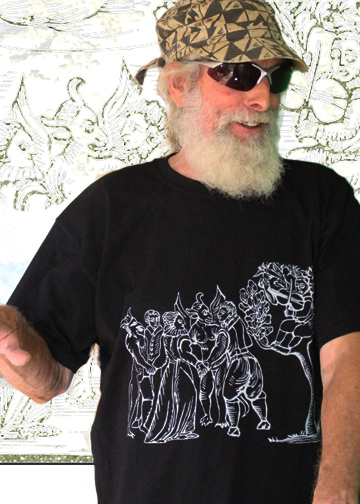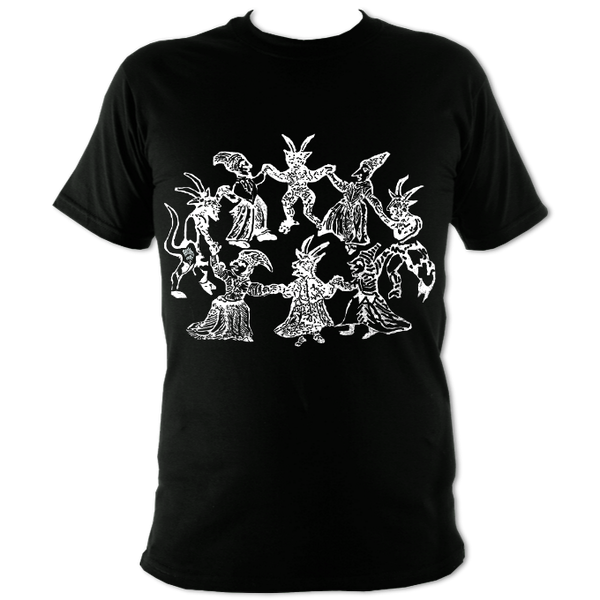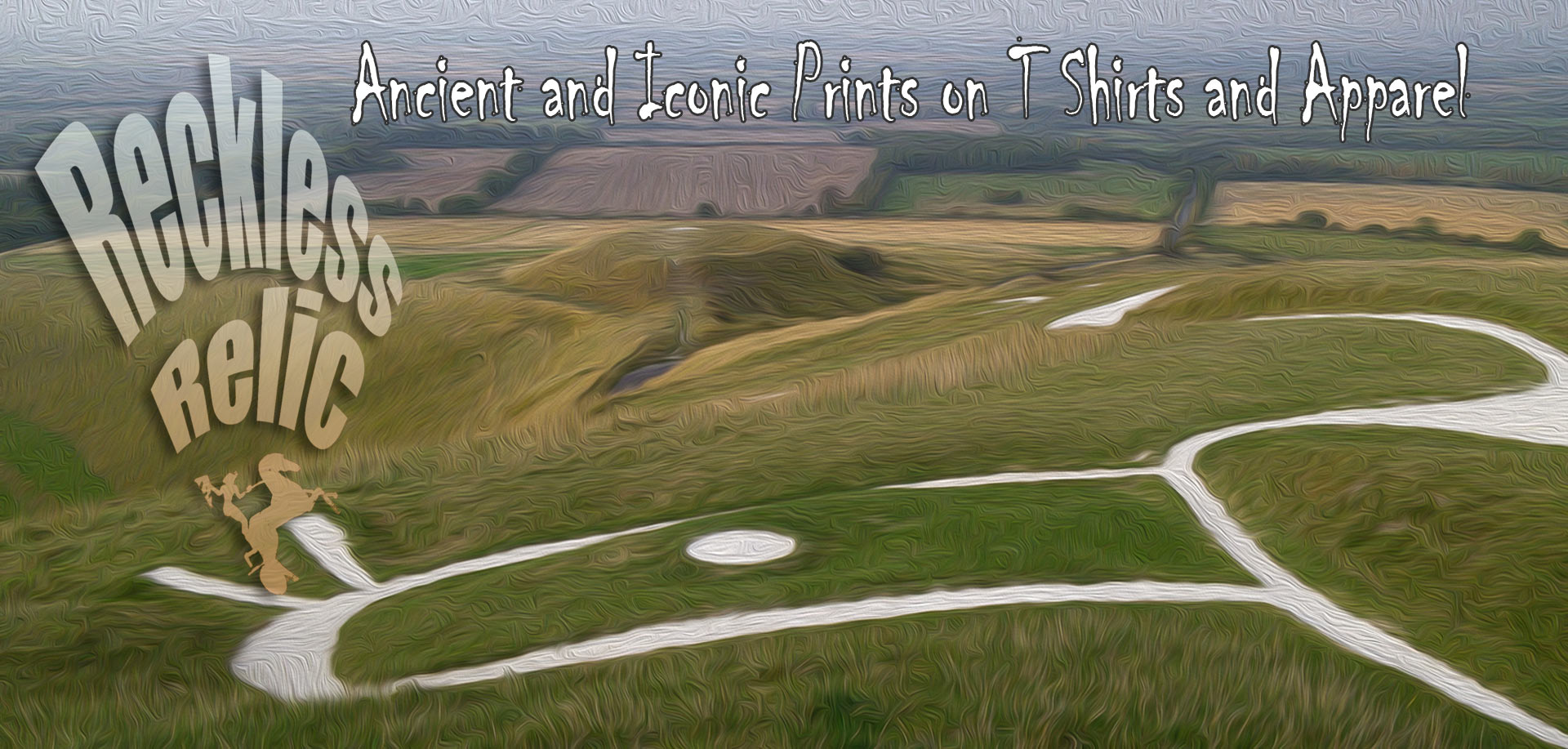Surely the most notorious Reckless Relics must be witches? Shakespeare’s famous play, Macbeth, gives insight into how these characters (not always women) were viewed in the first decade of the 1600s and the subject continued to be popular throughout the whole of the 17th century, the Salem Witch Crisis occurring in America in 1692.
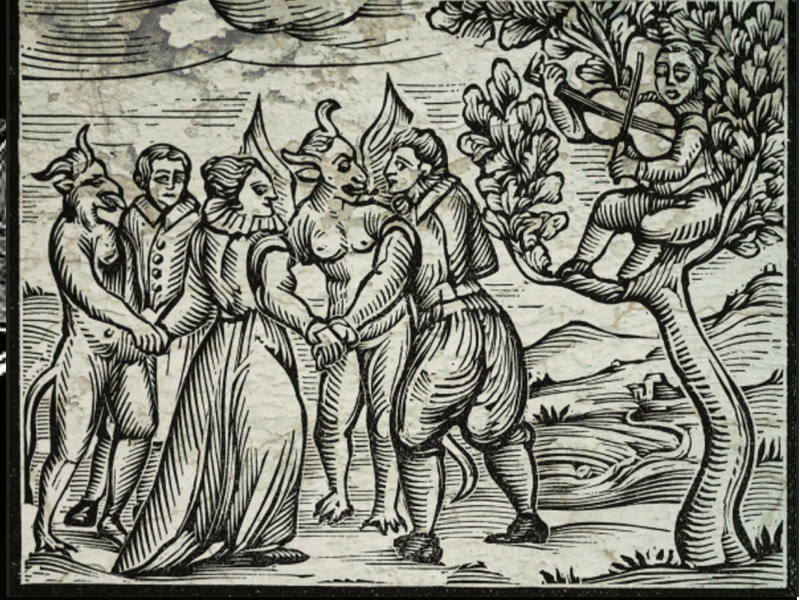
This article is about the literature that dealt with the subject of witchcraft, what academics of the day believed and how they influenced public opinion about witchcraft. The seventeenth century began with the Gunpowder Plot followed by the English Civil War, a particularly volatile time for the population of England. People genuinely feared witchcraft at the start of the seventeenth century, influenced by the religious beliefs of the Puritans, but opinions changed. Literature about witchcraft evolved, giving a fascinating glimpse into our ancestors psychology. As time moves on the subject has become mythologized. This article shines some light on how attitudes changed and why most of us love the idea of Halloween today.
What was the fascination with ‘OLD NICK’? How could anyone believe they were BEWITCHED? Common culture scapegoated many a poor unfortunate old woman years ago, and yet there were others who readily admitted to practising witchcraft, although they may have done this under torture. Let’s see what facts survive in the context of the times.
Charles 1st came to the throne in 1625 and triggered instability in England due to his relationship with parliament. In 1642 the King’s wife, Henrietta Maria, moved to the Netherlands with the crown jewels and the English Civil War was underway. Battles raged between Cavaliers and Roundheads for years, until, on 30th January 1649, Charles 1st was executed.
One may wonder if the growing interest in witches and witchcraft during the years of the English Civil war reflected the strain of living through such unstable times? Villager’s experiences were already precarious – life could be threatened by plague and other diseases and the possibility of famine. Soldiers were known to abuse communities as they passed through and families were forced to supply their menfolk for the armies. For those with battle injuries, treatment was little more than folk cures. Superstition seemed to be second nature and it is no wonder that people sought unfounded reasons for their problems. Unfortunately the most vulnerableusually took the blame for a community’s angst, and fearful people fed with silly ideas were easily persuaded.
Looking at the literature about witches in the 1600s
King James, wrote “Dæmonologie” which was re-published in London when he ascended the English throne in 1603 and there were others who wrote on the subject of witchcraft. William Perkins wrote, “Discourse of the Damned Art of Witchcraft”, published in 1608. Perkins was a fellow of Christ’s College at Cambridge and an eminent preacher respected by the Puritans. His sermon on witchcraft, given sometime between 1584 and 1597, reflected a strong belief in the reality of witchcraft, probably prompted by Reginald Scot’s work, “Discoverie”.
Perkins used a biblical argument for the existence of witches, but repudiated the power of witches to transform human beings into other shapes. Neither did he believe in the scratching of witches or testing them by water. Perkins was unclear about bodily marks, which King James found significant. Perkins did believe in the death penalty, if based on good evidence and was cautious about accusations against “good witches”. He condoned torture in extreme instances.
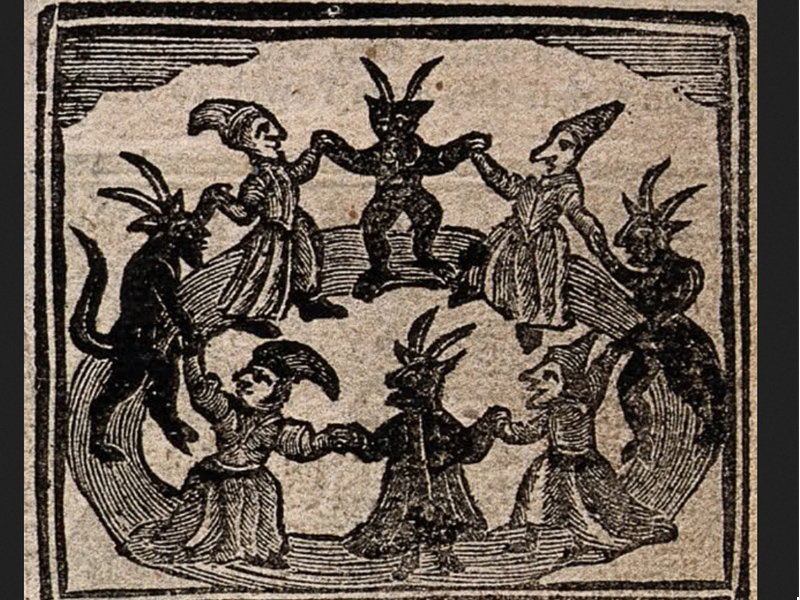
John Cotta from Northampton appears as a “Doctor in Physicke”. He studied at Cambridge and in 1612 he published “A Short Discoverie of the Unobserved Dangers”, with a chapter about the relationship between witchcraft and sickness which he elaborated upon in his “The Triall of Witchcraft” published in 1616. He, too, disapproved of trial by water and the search for evidence of marks on a witches body, but believed there could be contracts with the Devil, using Merlin and Joan of Arc as examples. He dismissed the idea of possession, probably due to the case of Mistress Belcher. She was believed to be bewitched, but after the two supposed witches were hanged at Northampton, their victim fell ill again.
Yet Cotta continued to believe that witches were real, being difficult to discover unless they confessed. Even then there may be, “meane, poore and uncertain proofe,” because the Devil could induce a false confession. Cotta believed that people could be over-imaginative in their observations and that coincidence could play a part in a witch’s predictions. Real cases of witch induced possessions, Cotta believed, could be detected by the “Physicion”, not the clergy.
In 1616 Alexander Roberts emerged as “minister of God’s word” at King’s Lynn in Norfolk. His literary contribution was called “A Treatise of Witchcraft” which gave an account of the trial of Mary Smith and a justification of her punishment.
1617 saw the publication of “The Mystery of Witchcraft”, by the Reverend Thomas Cooper, who believed he had discovered “the practise of Anti-Christ in that hellish Plot of the Gunpowder-treason“. Reminiscent of sensational journalism, he brought out the same work five years later under another title, “Sathan transformed into an Angell of Light, … [ex]emplified specially in the Doctrine of Witchcraft” .
When we reach the reign of Charles 1st, prior to the Civil Wars, only Richard Bernard of Batcombe was writing about witchcraft. Bernard preached in Nottinghamshire, then Somerset. Whilst in Nottinghamshire he witnessed exorcisms and at Taunton in 1626 he sought fair treatment for witches who were on trial. His book, “Guide to Grand-Jurymen … in cases of Witchcraft,” was published in 1627 which gave a “plaine countrey Minister’s testimony.”Like Cotta, he was skeptical of the water ordeal, but he accepted the use of a magical glass to discover “the suspected.” His warned courts to be careful in their methods of inquiry, reflecting caution in an age where witchcraft seemed real, but punishments were beginning to be viewed as over zealous.
Seventeen years later, John Gaule appeared more sceptical than Bernard, and challenged Hopkins the Witch Hunter in 1646, begging caution in the use of evidence. He wrote that suspicion was too lightly entertained against “every poore and peevish olde Creature.” Too many things were blamed on witchcraft, such “Tokens of Tryall” he deemed “altogether unwarrantable, as proceeding from ignorance, humor, superstition.” He was also sceptical about confession, arguing that the confessor may be diabolically deluded, or forced, or be confessing from the result of melancholy. Gaule had serious doubts about witch lore : metamorphoses, and narratives of “tedious journeys upon broomes”. Witches, he believed, could sometimes be detected, but only with exceeding caution and their discovery belonged to the province of the “Magistracy and Ministery.”
During the period of the Commonwealth Henry More and Meric Casaubon wrote against witches and Robert Filmer and Thomas Ady defended them.
More was educated at Cambridge and was an English philosopher. Grounded in Plato and Descartes, he studied Eastern Cabalistic philosophy and his ideas about witchcraft were influenced by the ‘mystic Oriental system’ . In 1653 More issued “An Antidote to Atheisme.” Saying that the phenomena of witchcraft gave evidence for the reality of the spirit world.
More heard a story about an old man of Cambridge, “Old Strangridge,” who was carried over Shelford Steeple “upon a black Hogge, and tore his breeches upon the weather-cock.” This, More believed, was absolute proof of the “nocturnal conventicles” of witches.
He was a dualist, believing that mind and matter were two separate entities, and questioned how the souls of witches could leave their bodies. He wrote, “I conceive the Divell gets into their body and by his subtile substance more operative and searching than any fire or putrefying liquor, melts the yielding Campages of the body to such a consistency … and makes it pliable to his imagination: and then it is as easy for him to work it into what shape he pleaseth.” He explained how this process differs from death by reasoning that death was the result of the unfitness of the body to contain the soul. He believed that when the Devil was operating the body it could be anointed in such fashion that the soul could leave and return!
Meric Casaubon was sceptical of More’s explanations, he wrote “Treatise concerning Enthusiasme”. Nathaniel Homes was a disciple of Perkins and believed that evil spirits performed many of their wonders by tricks of juggling, and the Devil was a presage of the last days. More, Casaubon, and Homes all offered personal explanations, and adhered to the main doctrines. The following men challenged those views:
Sir Robert Filmer was a Kentish knight and royalist who attended the Maidstone witch trials in 1652 where six women were convicted. The following year he published his “Advertisement to the Jurymen of England” where he interpreted passages in the Old Testament, declaring the Hebrew witch guilty of nothing more than “lying prophecies” and “hollow speaking”. He felt that some evidence was worthless.
Thomas Ady published “Candle in the Dark” three years later in 1655. Like Filmer, Ady was a disciple of Scot and dismissed all that came before, even refusing to believe that King James had been the author of his own work. Ady rejected the water ordeal and the evidence of marks and refused to accept that threats caused illness saying, “They that make this Objection must dwell very remote from Neighbours.” Yet Ady still believed in witches, but not in their power.
And so, over a hundred years, no author was willing to deny the existence of witches. Happily, by the end of the century, many people stopped believing in the water ordeal and the evidence of marks to prove that a person was a witch, but it was still widely believed that witches travelled through the air.
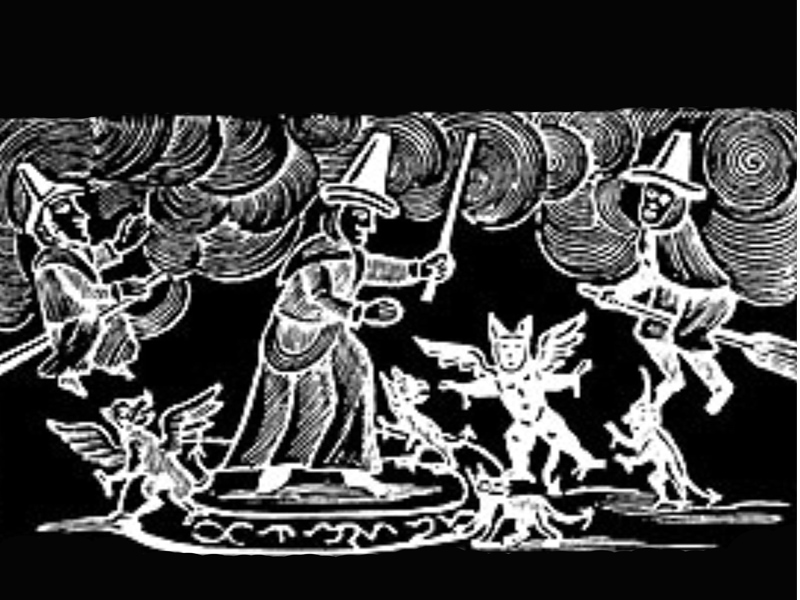
Drama of the 17th Century
Shakespeare used a great deal of witch lore in Macbeth, written circa 1606, but did not necessarily believe it himself. Thomas Middleton, who wrote “Witch” is thought to have drawn on Shakespeare’s witches, as did Dekker who collaborated with Middleton when writing “The Witch of Edmonton”. It is unknown if they took the subject seriously.
Ben Jonson however, ridiculed all supernatural phenomena and Thomas Heywood, in his play, “The Lancashire Witches” had a character say, “It seemes then you are of opinion that there are witches. For mine own part I can hardly be induc’d to think there is any such kinde of people.” Heywood, though, it is said, actually believed in witchcraft .
Three eminent writers also dealt with the witchcraft question. Burton, in “Anatomy of Melancholy” said “many deny witches at all, or, if there be any, they can do no harm.” James Howell wrote, “…he who denies there are such busy Spirits and such poor passive Creatures upon whom they work, (witches) … shews that he himself hath a Spirit of Contradiction in him.” Francis Osborne, an essayist, enjoyed disagreeing with the conventional, and it is believed that his scepticism of witchcraft influenced a generation.
At some time in the reign of James I, Francis Bacon wrote his Sylva Sylvarum and touched upon witchcraft, warning judges against believing the confessions of witches and evidence against them. “For the witches themselves are imaginative and believe oft-times they do that which they do not; and people are credulous in that point, and ready to impute accidents and natural operations to witchcraft….”
John Selden was a jurist who wrote “Table Talk” which included a paragraph on witches. He declared, “The Law against Witches does not prove there be any; but it punishes the Malice of those people that use such means to take away mens Lives….”
This view was shared by the philosopher Hobbes who issued his great “Leviathan” in 1651. He wrote,“As for Witches, I think not that their witchcraft is any reall power; but yet that they are justly punished for the false beliefe they have that they can do such mischief, joined with their purpose to do it if they can.”
Pamphlet Literature.
In 1612, the narrator of the Northampton cases wrote “many that remaine yet in doubt whether there be any Witches or no.” Mr. Potts, who reported the Lancaster cases of 1612, writes that the kinsfolk and friends of Jennet Preston, who was prosecuted at York, believed her accusation to be an act of malice.
In 1622 a Yorkshire poet and gentleman, Edward Fairfax, was concerned that his daughters were bewitched and would have had six women hanged if he had not met with great local opposition to it. In James’s reign, pamphlet-writers could meet opposition, but those of the Civil Wars and Commonwealth often met with ridicule. “There are some,” says the narrator of a Yorkshire story, “who are of opinion that there are no Divells nor any witches…. Men in this Age are grown so wicked, that they are apt to believe there are no greater Divells than themselves.” Of the sceptical public, one writer wrote that it was “very chary and hard enough to believe passages of this nature.”
The Civil Wars developed a regular London press and in 1654 the Mercurius Democritus, (equivalent to Punch) ridiculed supernatural stories that were in circulation. In 1648 a brochure appeared entitled, “The Devil seen at St. Albans, Being a true Relation how the Devill was seen there in a Cellar, in the likeness of a Ram; and how a Butcher came and cut his throat, and sold some of it, and dressed the rest for himselfe, inviting many to supper, who did eat of it.” The story was a parody of the demon tracts that appeared during the wars.
Opinion was reflecting a growing force of doubt. But the woodcut pictures of witches and devils that survive are so enthralling that one wonders what impact they made on the mostly illiterate public. Today, as we steal ourselves to watch the horror movie to the bitter end, or laugh at the zombie comedy films, we betray the fact that we share a similar psychology with our ancestors: many of us enjoy a little fear. There are still those who believe in witches and magic, and supernatural stories conjure up such delicious, edgy emotions, it is no wonder that today people just love to dress up and enjoy Halloween with it’s witchy connotations.
This Article, Reference:
https://www.gutenberg.org/files/31511/31511-h/31511-h.htm
# CHAPTER TEN: A HISTORY OF WITCHCRAFT IN ENGLAND FROM 1558 TO 1718 BY WALLACE NOTESTEIN, ASSISTANT PROFESSOR OF HISTORY IN THE UNIVERSITY OF MINNESOTA
